
Mikhailovsky Palace, the Russian Museum's main building
Peter Kovalev/TASS“I often and seriously contemplate the necessity of creating a museum of Russian art in St. Petersburg. Moscow has, indeed, the private, yet, great Tretyakov Gallery, which, as I’ve heard, Tretyakov will leave to the city. We have nothing,” Imperial Academy of Arts professor and teacher of the imperial couple Alexey Bogolyubov described the ruminations of Emperor Alexander III in his book ‘Notes of a Sailor-Artist’. The monarch had 15 years prior already thought about this key establishment for the national culture, which appeared in the capital in 1898.
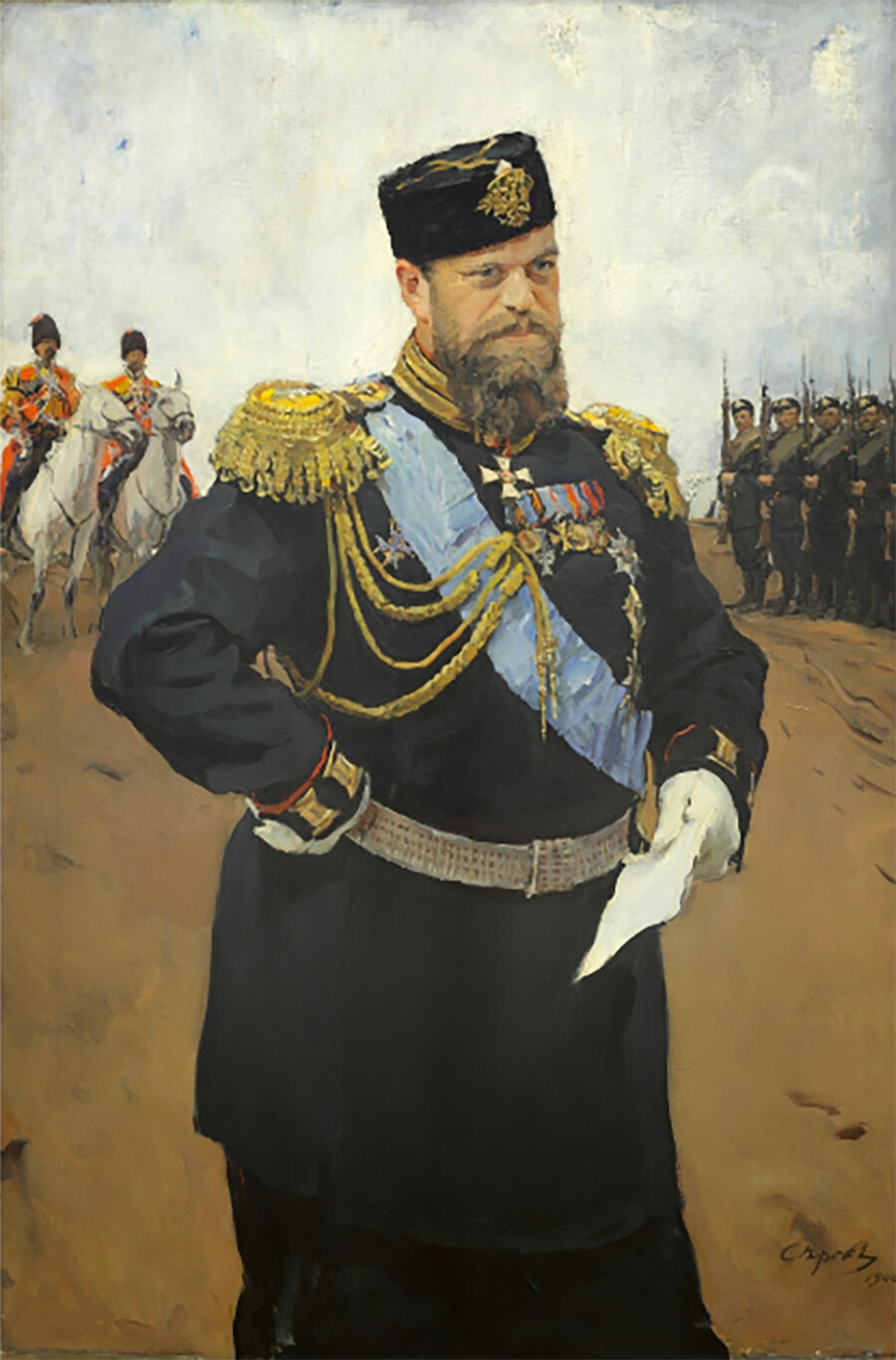
Valentin Serov. Portrait of Alexander III, 1900
State Russian MuseumThe tsar was an avid collector of the works of Russian artists: By 1894, his collection consisted of almost 600 paintings. In some sense, he was jealous of the Tretyakov Gallery’s fame – a private collection owned by Moscow businessman and philanthropist Pavel Tretyakov.
There was also space for respect between the two most famous Russian collectors, as well as for professional competition. Lev Anisov, art book author, cites a part of a conversation between them in his work, dedicated to Tretyakov: “In the Surikov room, the conversation started about ‘Boyarina Morozova’. The sovereign asked to let his museum have this painting. To that, Pavel Mikhailovich responded that the painting didn’t belong to him anymore, since he was leaving the gallery to the city [this happened in 1892 – Ed.]. Then, Alexander III stepped a little away from Tretyakov and bowed low to him.”
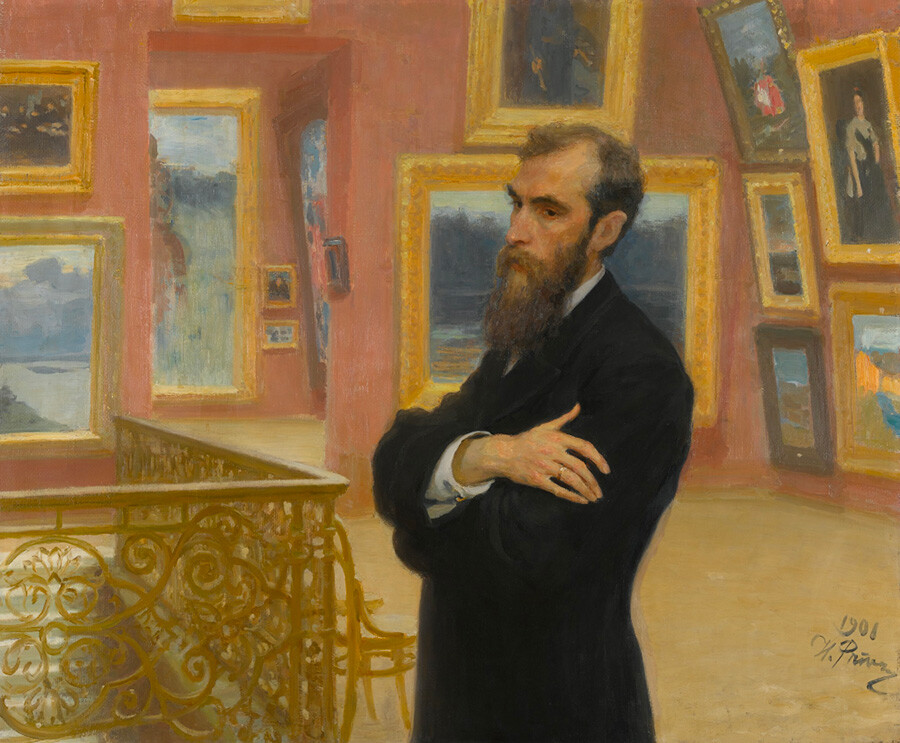
Ilya Repin. Portrait of Pavel Tretyakov, 1901
State Tretyakov Gallery“The Tretyakov Gallery was situated in Moscow. Moscow, at the time, was viewed as the old capital, the center of Slavic spirit. For Alexander III, it was important to open a museum in St. Petersburg – and, as such, turn a European capital into the capital of Russian art,” St. Petersburg State University docent and historian Olga Kruglikova comments.
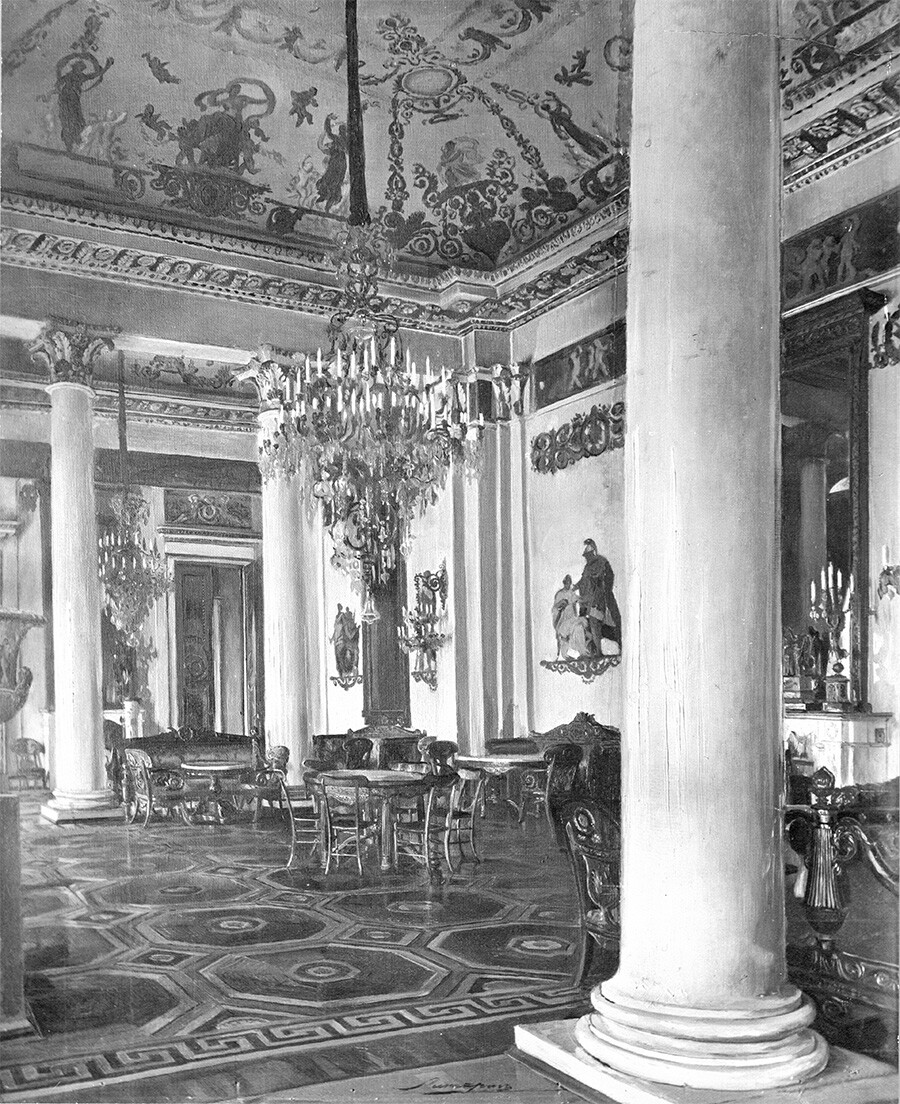
Ernst Friedrich von Liphart. White hall of the Mikhailovsky Palace
State Russian MuseumLike many of the Romanovs, Alexander Alexandrovich was well-versed in art. As a tsesarevich, he played wind instruments in his own musical collective; upon becoming a monarch, he supported the development of Russian opera. In his youth, he studied painting under professor of arts Nikolai Tikhobrazov and, later, along with his wife Maria Feodorovna, took lessons from academic Bogolyubov. He was personally acquainted with many Russian painters; he visited their vernissages and workshops, commissioned and purchased paintings. Paintings from his collection were displayed at the largest Russian exhibitions.
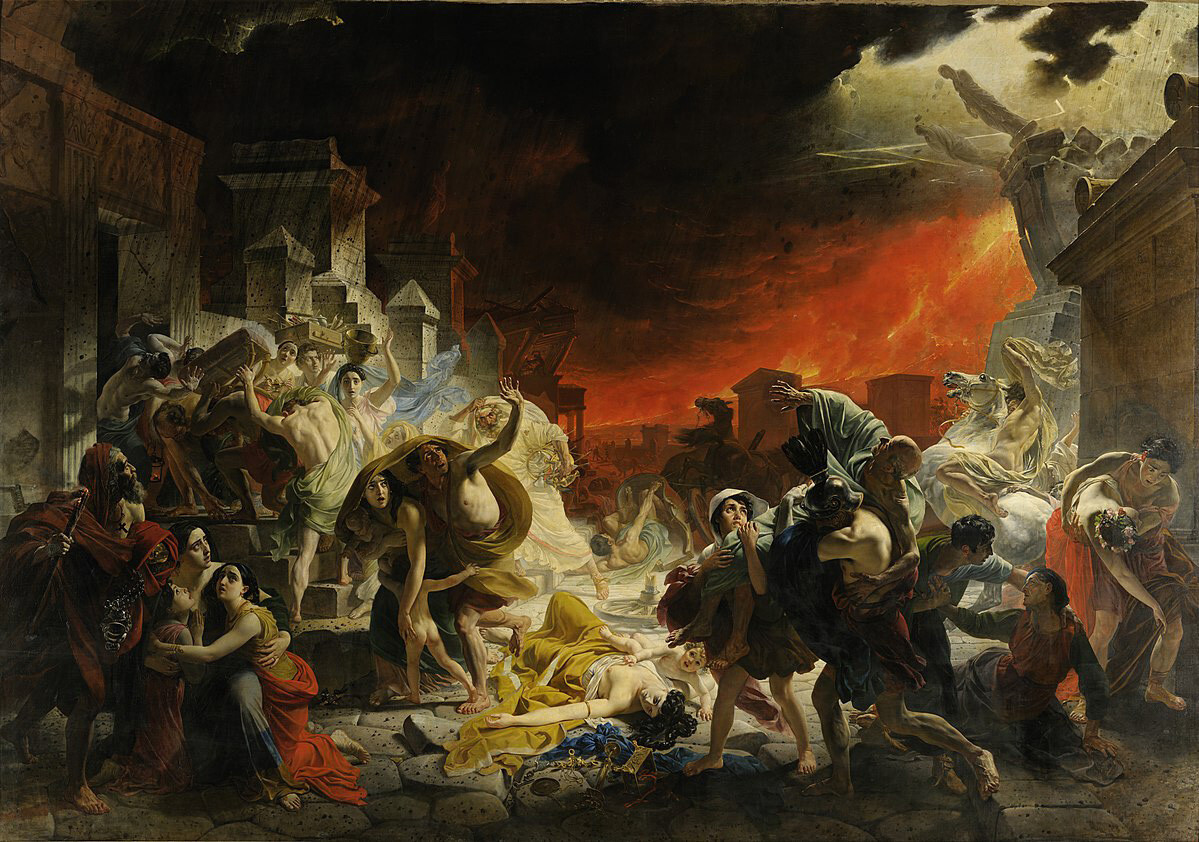
Karl Brullov. The Last Day of Pompeii, 1833
State Russian Museum“While Russian monarchs before Alexander III – especially Catherine the Great – assembled collections of mainly European art, he was the first to systematically collect Russian fine art, striving to attract the attention of the European public to it. The common feature of the Alexander era – cultural synthesis, when in all types of art, Russian antiquity was played out in the European style or, vice versa, when national motifs were weaved into classical European forms,” Olga Kruglikova notes.
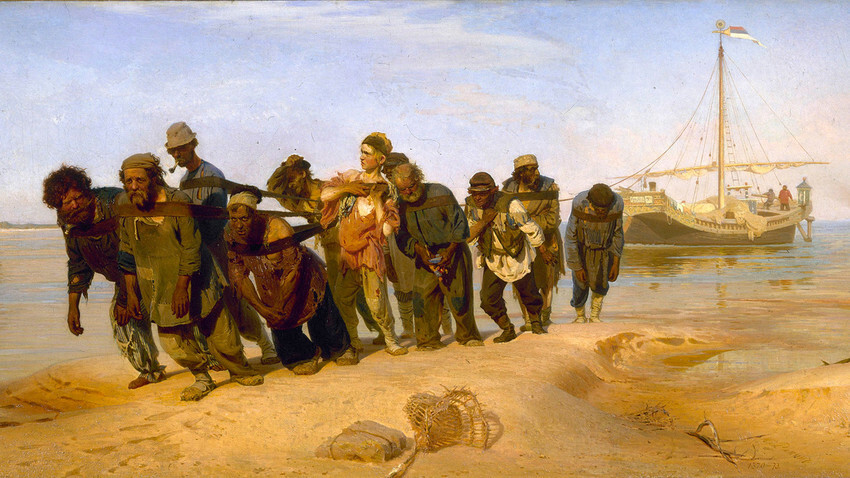
Ilya Repin. Barge Haulers on the Volga, 1870s
State Russian MuseumThe royal family encouraged peredvizhniki (a group of Russian realist artists): they painted their works according to narratives from Russian history or about the life of Russian people in a realist manner; they also organized exhibitions, designed to acquaint the inhabitants of provinces with modern domestic art. Alexander, who didn’t like the ideological struggle between the representatives of academic art (specifically the leadership of the Imperial Academy of Arts) and ‘peredvizhniki’, initiated a reform of this educational institution. In the end, the Higher Art School emerged within it and many ‘peredvizhniki’ were invited to teach there. All of this, in many respects, propagated the development of national art.

Mikhailovsky Palace, 1820s
State Russian MuseumAlexander III didn’t manage to open the museum; he suddenly died from a disease in 1894 and his vast collection was scattered across many royal residences. The decree on the founding of this establishment was signed in 1895 by Nicholas II, instead.
“Answering the spiritual need to immediately fulfill the will of the late Sovereign, We have judged it right to found a special establishment with the name of the ‘Russian Museum of His Imperial Majesty Alexander III’,” the document stressed.
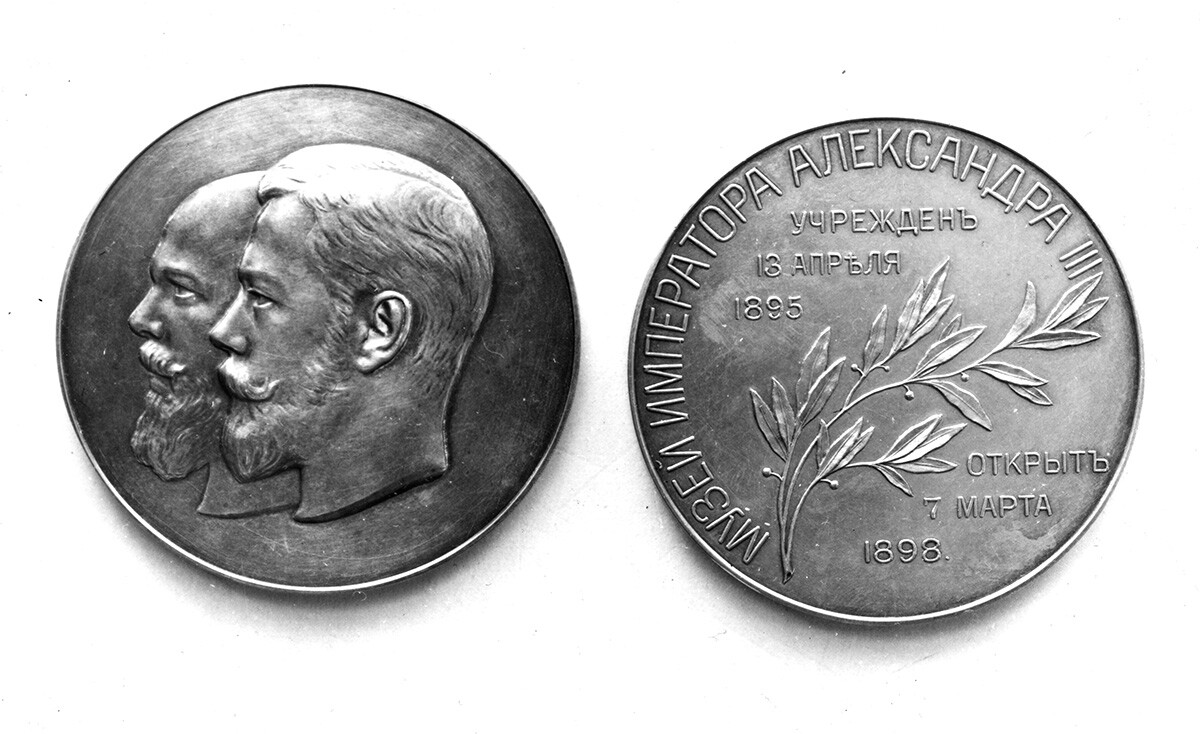
A. Grilikhes. A medal marking the opening of the ‘Russian Museum of His Imperial Majesty Alexander III’
State Russian MuseumSuch a name referred to the monarch as the largest collector and patron of national art; it also directly reflected the ideological plan of Alexander III. After the revolutionary events of 1917, the mention of the emperor was removed from the name of the museum. However, the name of the establishment still bears Alexander’s concept.
For the museum, Nicholas II ordered for the Mikhailovsky Palace to be bought out from the descendants of his great-great-grandfather, Emperor Paul I. This building, built in 1825 by Italian architect Carlo Rossi, was reconstructed and officially opened in the presence of the new monarch, widow empress Maria Feodorovna and other family members on March 7 (19), 1898.
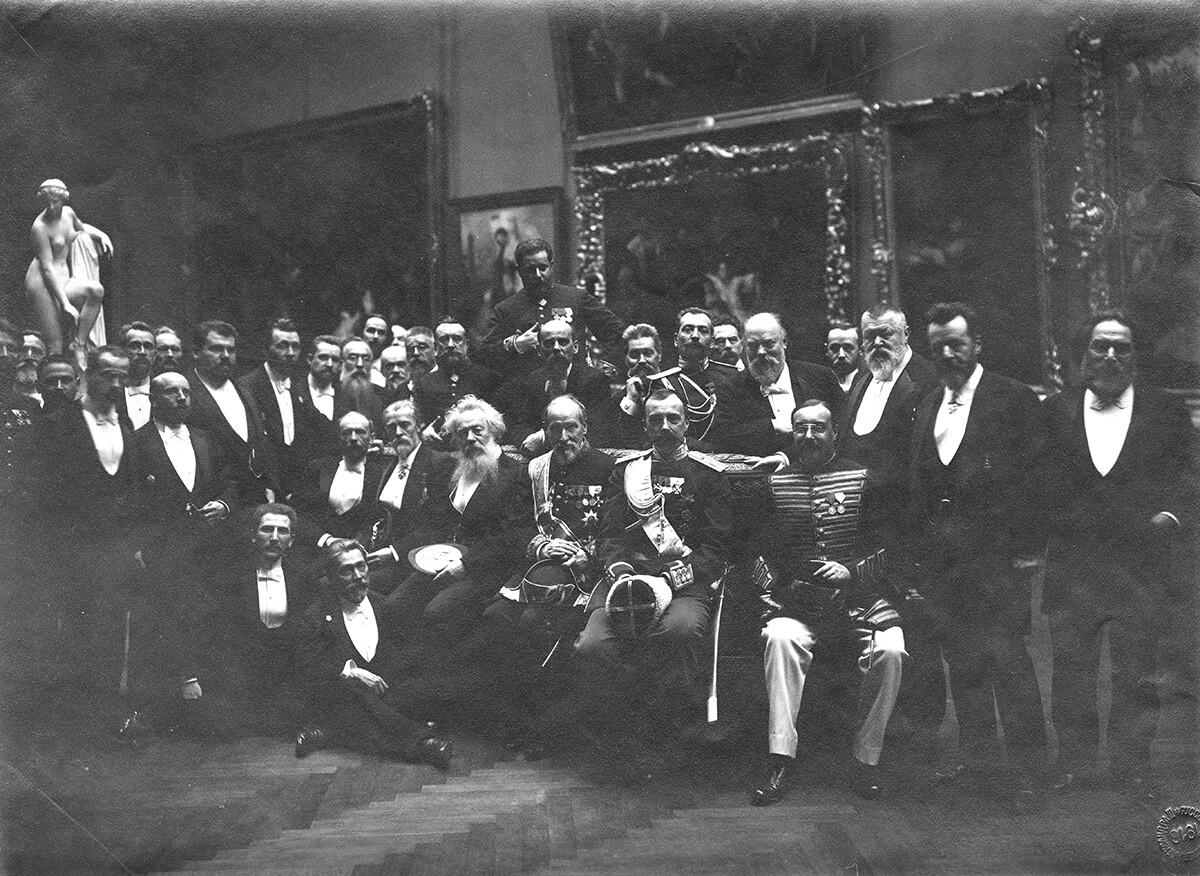
At the opening of the Russian Museum on March 7 (19), 1898: the museum's manager, Grand Duke Georgy Mikhailovich, pictured in center along with artists and sculptors
State Russian MuseumAt that time, the Russian Museum occupied 37 halls of the Mikhailovsky Palace, split into 10 sections. Today, it also includes the Benois Building, St. Michael’s Castle (Engineers’ Castle), the former residence of Emperor Paul I, the Marble Palace, which belonged to the descendants of Emperor Nicholas I, as well as the Stroganov Palace and the Summer Palace of Peter the Great.
Initially, the foundation of the museum’s collection consisted of 80 paintings from the Hermitage, 120 paintings from the Imperial Academy of Arts, 200 paintings from the Winter Palace, the Gatchina Palace, the Alexander Palace in Tsarskoye Selo, as well as paintings from the collections of private collectors.
Today, the museum has more than 400,000 exhibit pieces that span historical periods of the development of Russian art over more than a 1,000 years – from the 10th to 21st centuries.

The Russian Museum (Mikhailovsky Palace)
Legion MediaFind more information about the Russian museum on the website en.rusmuseum.ru.
Dear readers,
Our website and social media accounts are under threat of being restricted or banned, due to the current circumstances. So, to keep up with our latest content, simply do the following:
If using any of Russia Beyond's content, partly or in full, always provide an active hyperlink to the original material.
Subscribe
to our newsletter!
Get the week's best stories straight to your inbox